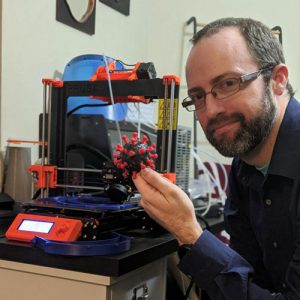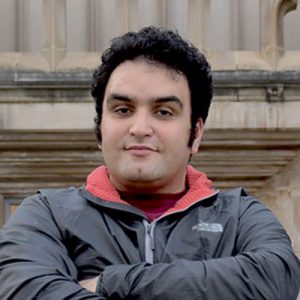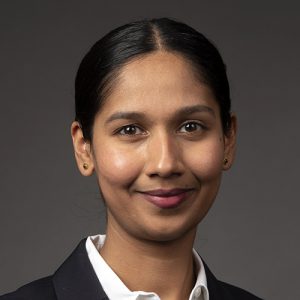In the upcoming Fall 2022 academic semester, Marymount University will offer its students innovative, in-person bachelor’s degree programs in Engineering for the first time in the University’s history. This comes as the institution continues to expand its offerings of cutting-edge STEM programs while also gaining increased recognition as a hub in the national capital region for the creation of next-generation talent in highly-skilled career fields.
The University will provide students separate degree paths in Biomedical Engineering and Mechanical Engineering. In both programs, students will create technological solutions to medical problems that face aging populations and individuals with disabilities or impairments.
“It’s one thing to build a foundational knowledge within a field of study and learn the skills needed to turn that knowledge into a successful career. But at Marymount, we take the extra step and guide our students to apply that knowledge towards the service of others and the promotion of a greater good,” said Dr. Hesham El-Rewini, Provost and Senior Vice President of Academic Affairs at Marymount University. “We are proud to launch Engineering programs that will hold such a unique place in American higher education in that the entire curriculum has been designed to improve people’s lives all around the world.”
The World Health Organization (WHO) estimates that by 2030, more than two billion people worldwide will need at least one assistive technology product – such as wheelchairs or prosthetics – to live independent and healthy lives. However, more than 90 percent of those who need assistive technologies don’t have access to them, as current models for medical care and treatment are insufficient to meet this growing need.
In response, Engineering students at Marymount will make an impact on global health care by completing foundational projects involving traditional and additive manufacturing technologies and basic electronics to rapidly provide innovative solutions. Examples include building upper and lower limb exoskeletons and body-powered prosthetics to be donated internationally, exploring virtual and augmented reality technologies and designing custom electronic solutions.
“What sets Marymount apart is our commitment to a high-quality undergraduate education that emphasizes small class sizes, personal attention and opportunities for all students to conduct research,” explained Dr. Marnel Niles Goins, Dean of Marymount’s College of Sciences and Humanities. “With our inaugural Engineering programs, participants can take advantage of this student-centered environment not only to join a rewarding career field but also make a difference in people’s everyday lives.”
“One of the biggest things that we’re emphasizing is that we want our students to be in the engineering labs and building stuff that has a greater purpose, not just something that will sit in a closet somewhere,” added Dr. Eric Bubar, Associate Professor of Engineering at Marymount. “For instance, a student may build a body-powered prosthetic device to learn how to use simple machines to mimic biomechanical function. And then, they would send that device to an individual in Guatemala who could then use it in their day-to-day life.”
Marymount’s Engineering programs will be led by Dr. Bubar, who came to Marymount in 2011 with advanced expertise in physics and astronomy. Since then, he has utilized those skills to develop open-source solutions for individuals in need through the use of technologies like 3D printers, virtual reality, bioprinting and more. He also helped lead a volunteer effort to mass produce 3D-printed face shields for distribution to hospitals across the country in the early days of the COVID-19 pandemic, when the PPE resource supply chain was much more strained.

Two new faculty members will be joining Dr. Bubar on the Engineering faculty team. With research specializing in solid and fluid mechanics and heat and mass transfer, Dr. Farzad Ahmadi has served as an instructor for several undergraduate and graduate-level Engineering courses over the past decade while also conducting a variety of engineering outreach programs for youth. He uses a rich blend of experimental, analytical and computational methods to gain a comprehensive understanding of challenging problems like anti-freezing materials and solar desalination, and his research has been featured in The New York Times, The Guardian, Science and other domestic and international media.

The experience of Dr. Shama Iyer, meanwhile, spans biomechanics, tissue engineering, muscle physiology, biomaterials and STEM education and outreach. Examples of her past research include developing surface coatings and mesh materials to improve skeletal muscle regeneration and reduce scar tissue after muscle loss. Her current, multidisciplinary research on skeletal muscle physiology is funded by the National Institutes of Health (NIH).

Marymount’s Biomedical Engineering B.S. and Mechanical Engineering B.S. have been approved by the Southern Association of Colleges and Schools Commission on Colleges (SACSCOC). To find out more, click here to visit the program page on Marymount’s website.





